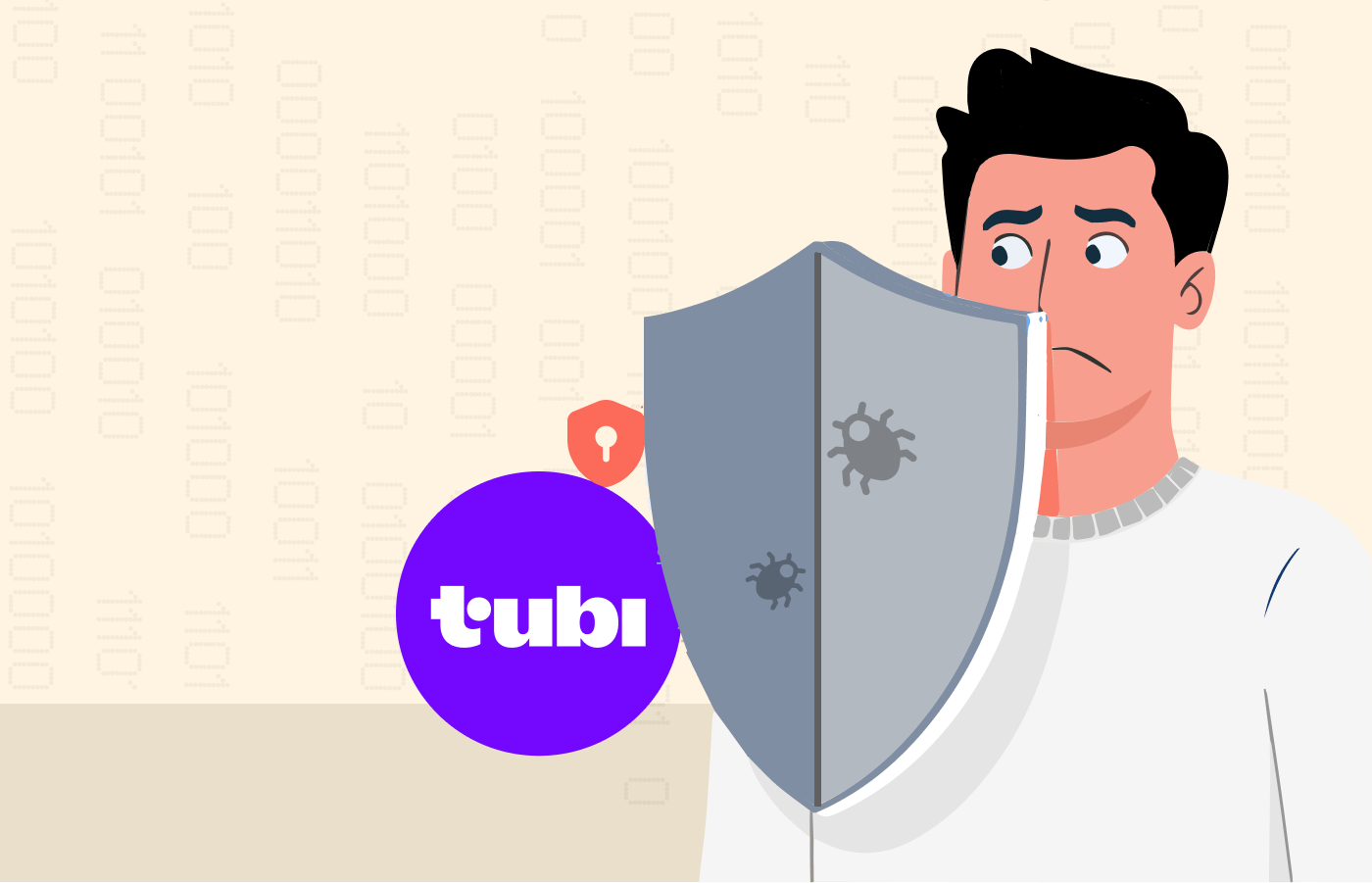
Netflix’s password-sharing feature has ended. Its restriction policy reveals that you’ll need to pay extra money to share your account with a user outside your home. But you can leverage a VPN with a Meshnet feature to bypass this ban. This technology allows you to connect to your household network regardless of location.
In this article, we’ll walk you through changing your IP address to access a friend’s or family member’s account, irrespective of location. You’ll also gain insight into the reasons behind this latest restriction. Let’s get started.
A quick guide to bypassing Netflix password sharing restriction
- Subscribe to a VPN like NordVPN that offers Meshnet capabilities.
- Download and install the VPN app on a device within the Netflix subscriber’s household.
- Turn on Meshnet on the device.
- Install the VPN app.
- Connect to the Meshnet network using your device.
- Log in to the Netflix app to watch your favorite movies and shows wherever you are.
Why does Netflix restrict password sharing?
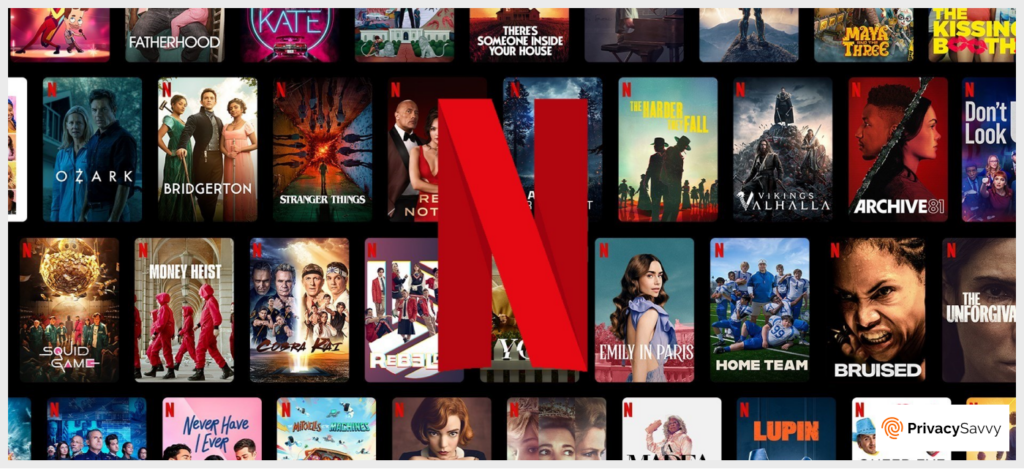
Initially, Netflix had no problem with password sharing. In the words of its CEO, Reed Hastings, in 2016, the act was a “positive thing” as the practice led to the creation of more personal Netflix accounts. While the statement did not encourage password sharing, Netflix didn’t worry much about it since they were experiencing massive subscriber growth during that period.
However, by 2022, Netflix experienced stagnation as its subscriber base declined for the first time in over 10 years. Consequently, the practice of password sharing became more concerning for the company.
It is necessary to state that Netflix gave no official report on how much revenue they had lost, but other reports did. For example, a Los Angeles Times report quantified the possible loss of about $9.1 billion in 2019. The amount was projected to be up to $12.5 billion on or before 2024.
While this may be the primary reason, Netflix also faced intense competition from the other big players in the streaming game. HBO Max, Disney+, Peacock, Paramount+, and Apple TV+ emerged as strong competitors, winning more subscribers.
Hence, Netflix got some more reasons to ban free password sharing. The approach seems to deliver as more paid users have been added.
How does Netflix know that I shared my account?
Netflix has several ways to detect that you are sharing your passwords. Most times, they use a combination of these ways:
- Device activity: The Netflix system can access your device IDs and IP addresses and monitor your account activity to determine whether other users are members of the primary user’s household.
- Verification: Netflix can send a four-digit verification code to the primary account holder. Although other users can still input the code and pretend to be the primary holder, Netflix can likely know if you share your account.
In which countries are there Netflix password-sharing restrictions?
According to Netflix, the password-sharing ban affects 103 countries. Notable names include the United States, France, the United Kingdom, Australia, Canada, Germany, Spain, Mexico, Singapore, and Brazil. In some countries, Netflix allows some users who want to share passwords to pay extra fees to add their friends.
Also, Netflix has reiterated that there won’t be additional user membership options in locations where the account sharing restriction is just enforced. The reason is the low market penetration in these locations. See a portion of Netflix’s statement below:
In these markets, we’re not offering an extra member option given that we’ve recently cut prices in a good number of these countries (for example, Indonesia, Kenya, Croatia, and India), and penetration is still relatively low in many of them so we have plenty of runway without creating additional complexity. Households borrowing Netflix can transfer existing profiles to new and existing accounts.
Who are those negatively affected by the password-sharing ban?
According to Netflix, the password-sharing restriction will affect over 100 million households. The new structure would mean there has to be a primary home location while other homes cannot enjoy the streaming service. However, some adjustments were made to this.
Netflix said the streaming service will still be available for people who are traveling for a short period. Also, users of different households can add more profiles to their accounts by paying an additional $5.95. This resembles most other streaming services that limit the number of gadgets streaming simultaneously.
How to bypass Netflix password sharing
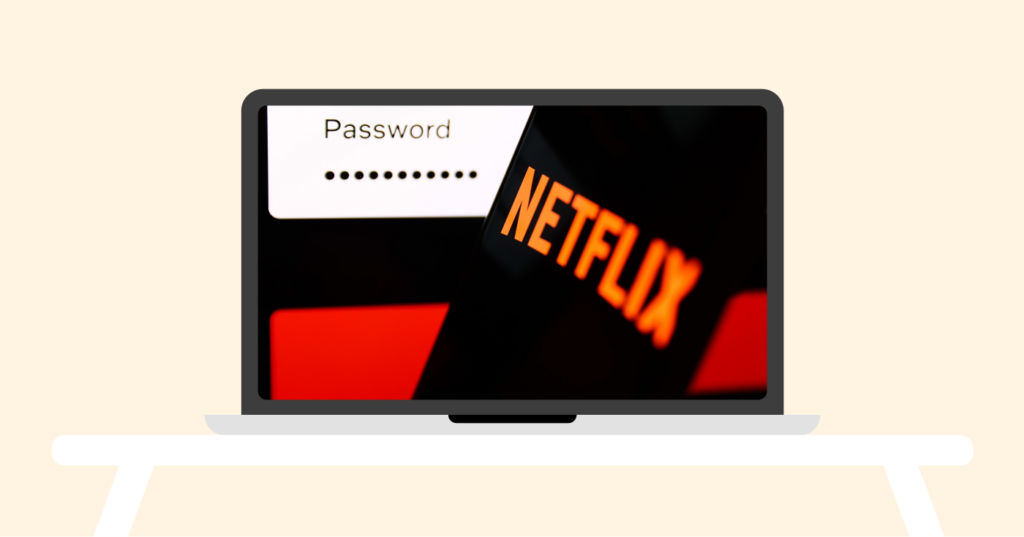
You must understand how it works to avoid Netflix’s account-sharing ban. Let’s break it down.
Whenever you’re subscribed to the network, Netflix notes your IP address. Then, any added user that hasn’t connected to your home’s IP address at least once a month will be blocked. The simplest way to deal with this problem is to remotely connect to your household’s IP address. Check out how to do so below:
1. Subscribe to a VPN with Meshnet technology
The first step to bypassing the Netflix password-sharing ban is subscribing to a VPN with the Meshnet feature. This technology helps you to easily share and connect remotely to your home’s IP address. The other option for using Meshnet is to connect all your devices to the same IP address using any VPN.
Besides the fact that it might not be safe, it’s very inconvenient to stick with the same server whenever you want to use Netflix, making Meshnet your best bet. If you love games, you can also leverage Meshnet to share files or make it seem like you’re connected to a local area network (LAN) while gaming.
2. Subscribe to NordVPN

An outstanding VPN service that bypasses censorship and restrictions and helps you watch your desired content.
Pros
- Allows access to geo-restricted content with stealth browsing feature
- Runs on RAM-based servers for thorough anonymity
- Boasts blazing-fast connection speeds
Cons
- Distant servers take longer to connect
Our top VPN recommendation with Meshnet technology is NordVPN. Once installed, you’ll be connected to your household’s network within minutes.
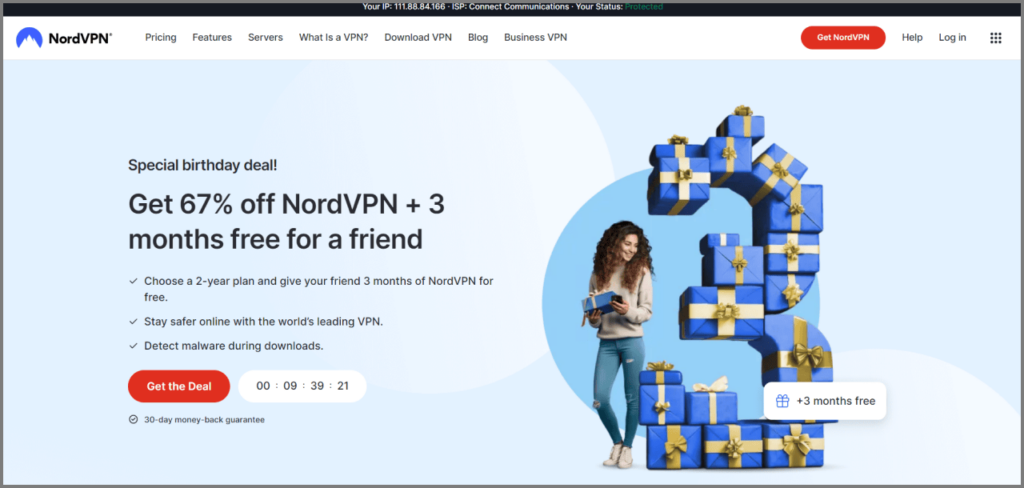
Aside from this, you can use NordVPN for high-quality streaming while accessing a large Netflix library because of its massive server network. Also, you get to enjoy double privacy by using this VPN’s obfuscated servers to hide that you’re actually using a VPN.
3. Install the VPN on your devices
To successfully bypass the Netflix account’s password-sharing ban, you must install NordVPN on a device within your household and on the device (phone, tablet, or laptop) where you want to stream Netflix remotely.
Click on the download link you receive after signing up and follow the installation prompt. For optimum safety, use a MacOS or Windows device as your Meshnet host. If you’re using macOS, install the VPN from the developer’s site because the one on the App Store might not work as a Meshnet host.
4. Turn on Meshnet on your household device
The next step is to enable Meshnet on your household device. Here’s how it is done:
- Open the NordVPN app on your home device.
- Click on the Meshnet option. It’s usually the second option located below the main interface.
- Toggle on the Meshnet connection slider.
- Take note of the name that shows on top. That’s what you’d connect to on your remote device.
5. Connect to the new network from remote devices
Once you’ve successfully set up your Meshnet host, you can invite external devices to join the network. However, the fastest way is to use your remote device to connect to your host’s IP address from anywhere.
Check out how to do so below:
- Open NordVPN on the device you want to connect remotely with.
- Open the Meshnet tab.
- Toggle on Meshnet and scroll down the page to “Your devices.”
- Look for the connection name you noted earlier and select the “Route all traffic” option next to the network.
- You’ve successfully connected to your household’s IP address. To stop using the network, click “Stop routing traffic.”
6. Watch Netflix worldwide
By following these instructions thoroughly, you should be able to stream videos on Netflix, regardless of how far you are from your household. As stated before, remember to connect to your Meshnet host at least once a month so that your access is not banned.
Is Netflix password sharing illegal?
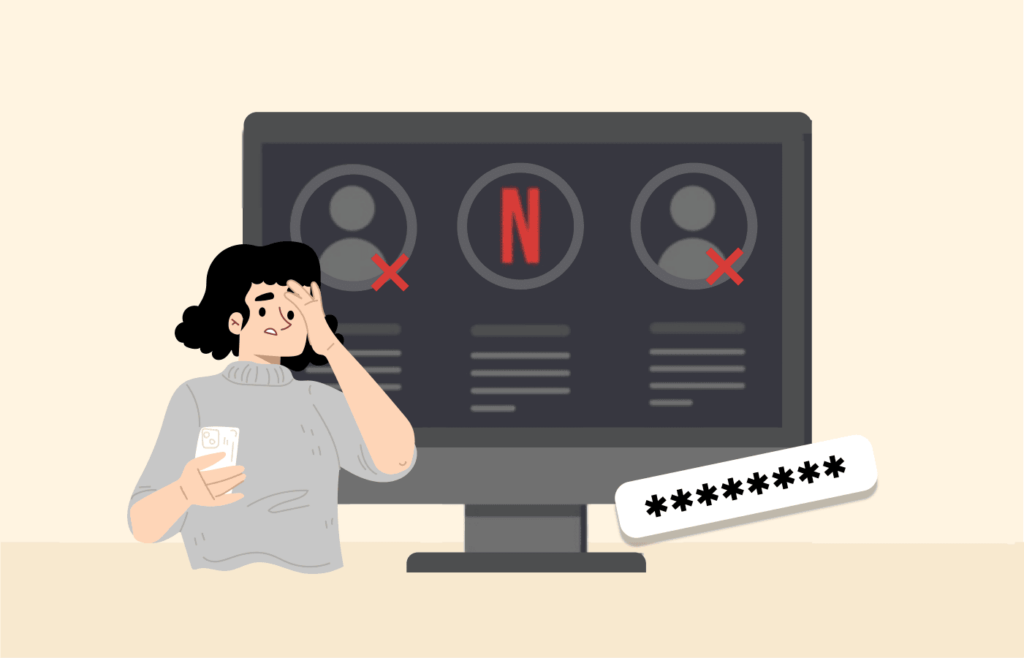
We can’t give a simple yes or no answer to this question. Until now, Netflix password sharing has been a common practice among different users. There is no contractual rule stating Netflix password sharing is illegal. Hence, this remains a gray area.
However, there may be a case in which the act might be illegal. The Computer Fraud and Abuse Act (CFAA) is a federal law that can prove that Netflix password sharing may be a crime. More so, in 2016, a case of corporate password-sharing was ruled out by the Ninth Circuit Court of Appeals under the CFAA.
The truth is that there is much uncertainty and ambiguity about the CFAA and its interrelationship with sharing streaming passwords. Also, there has not been any report of an event in which an individual was prosecuted because they shared their Netflix password. Yet, if you ask eight different legal practitioners whether there is a penalty for sharing a Netflix account or password, you may get eight different answers.
How to add an extra profile to your Netflix account
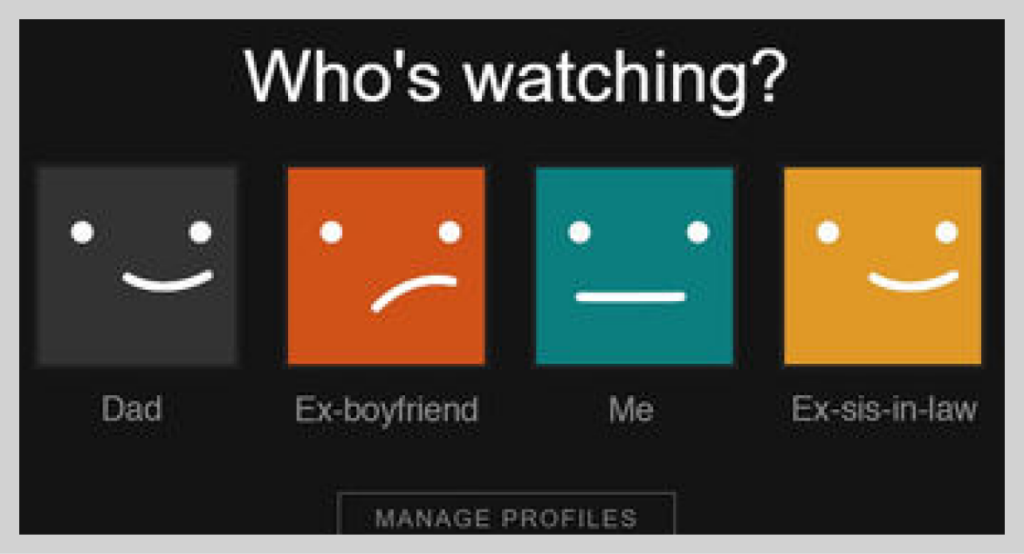
If you live in a household with other users, everyone can enjoy their unique Netflix experience. A single Netflix account can have up to 5 profiles. However, devices made before 2013 cannot have profiles. Every profile allows users to set the following:
- Maturity level
- Language preference
- Profile lock
- Specific viewing restrictions
- Game handle
- Viewing activity log
- Subtitle appearance
- Game saves
- Playback settings
- My List
- Personalized TV show and movie suggestions
- Ratings
Below is a step-by-step instruction you can follow to create a profile:
- From your web browser, click on the “Manage Profiles” page. Choose “Add Profile.” If you are using the mobile app for iPhone, Android, or iPad, do the following:
- At the lower right, click on “My Netflix.”
- At the upper right, select “More.”
- Select “Manage Profiles.”
- Click “Add Profile.”
- Name your profile.
- If you want to enjoy the Netflix Kids experience, click “Kids.”
- Choose “Save” or “Continue” to see your newly created profiles on your account.
How to change a profile on your Netflix account
For most devices, you can customize your profiles. Here’s how to do it:
- From your web browser, click on your “Manage Profiles” page. If you are using the mobile app for iPhone, Android, or iPad, follow these steps:
- At the lower right, click on “My Netflix.”
- At the upper right, select “More.”
- Select “Manage Profiles.”
- Select the profile you want to change.
- Edit the name, image, and even language on the profile.
- Save your changes.
How to remove a profile from your Netflix account
Most devices also allow you to delete your account. Check out how it’s done below:
- Open the “Manage Profiles” menu on Netflix using your web browser. You can also delete an account using the mobile app on your Android or iOS devices by doing the following:
- Select “My Netflix” at the lower right side of the page.
- Look for the “More” option at the upper right and click on it.
- Choose “Manage Profiles.”
- Select the profile you want to remove.
- Click on “Delete Profile” to remove the profile entirely.
The changes are saved once a profile is deleted and its viewing history is no longer available. However, you cannot delete the main profile of your Netflix account. If you cannot create, edit, or delete a profile on your device, you can visit Netflix’s official website with your web browser and follow the steps we’ve highlighted above.
FAQs
Yes, you can, as long as the added users live within your household. Sharing your password with a profile from another household will cost you extra money, or you can ensure that additional users connect to your household network once in 31 days.
Netflix announced its password-sharing restriction for devices in different households in May 2023. Adding a user outside your home now requires a fee.
Netflix no longer allows this option. Nonetheless, you can take the measures highlighted in this article, such as using a Meshnet-enabled VPN, to bypass Netflix’s recent password-sharing restriction.
Yes, you can, as long as you’re connected to the same VPN server you use in your household. Alternatively, you can use a VPN like NordVPN with Meshnet capabilities. With this kind of VPN, you can share the same IP address with devices within your household.
You must connect to your household’s network to avoid Netflix’s primary location error. Using a VPN like ExpressVPN lets you ensure this remotely.
